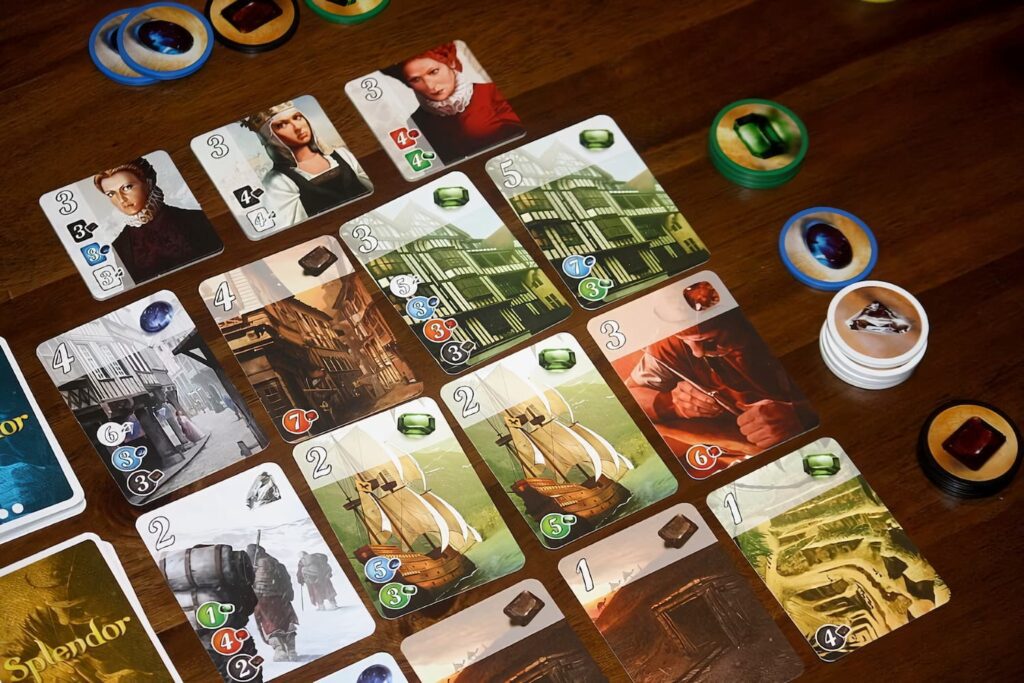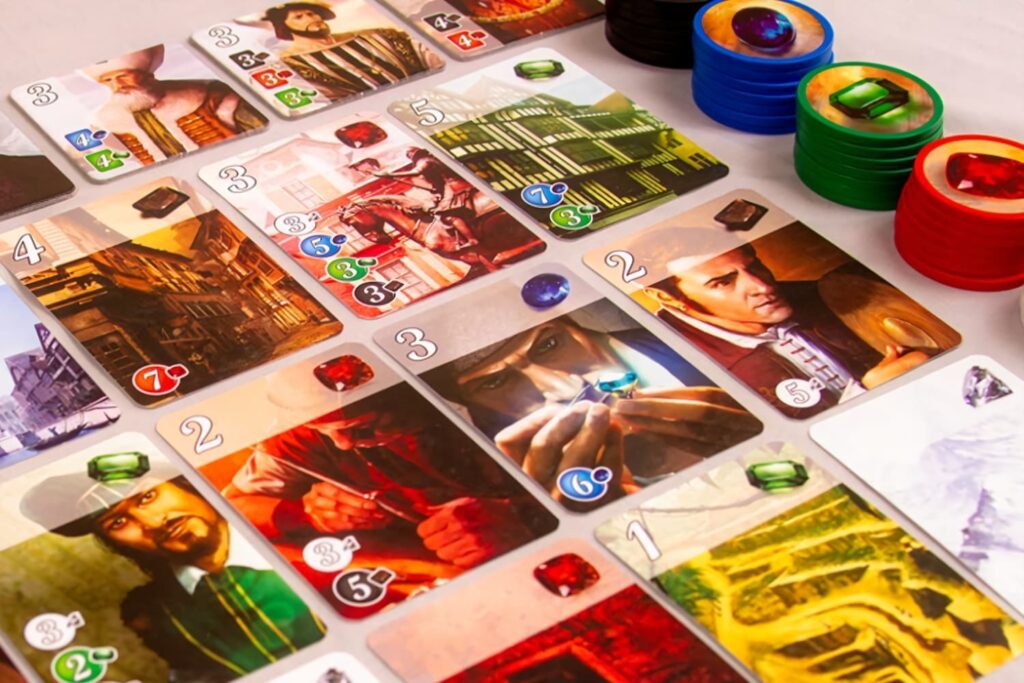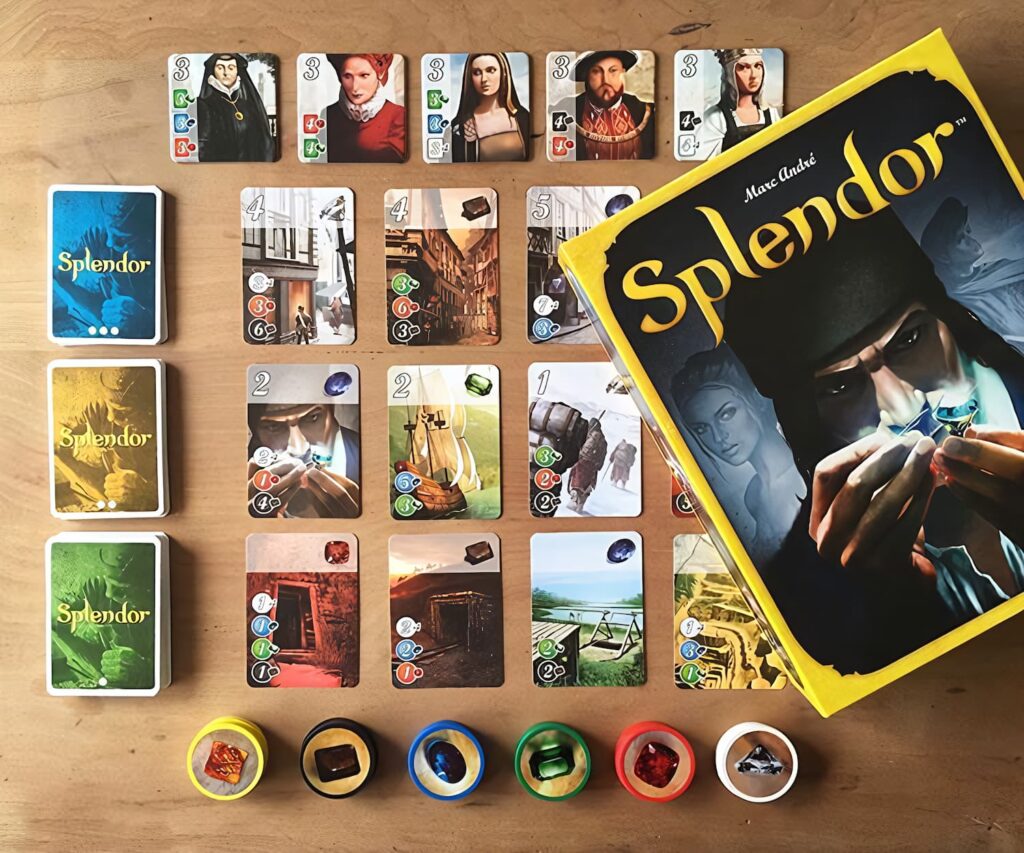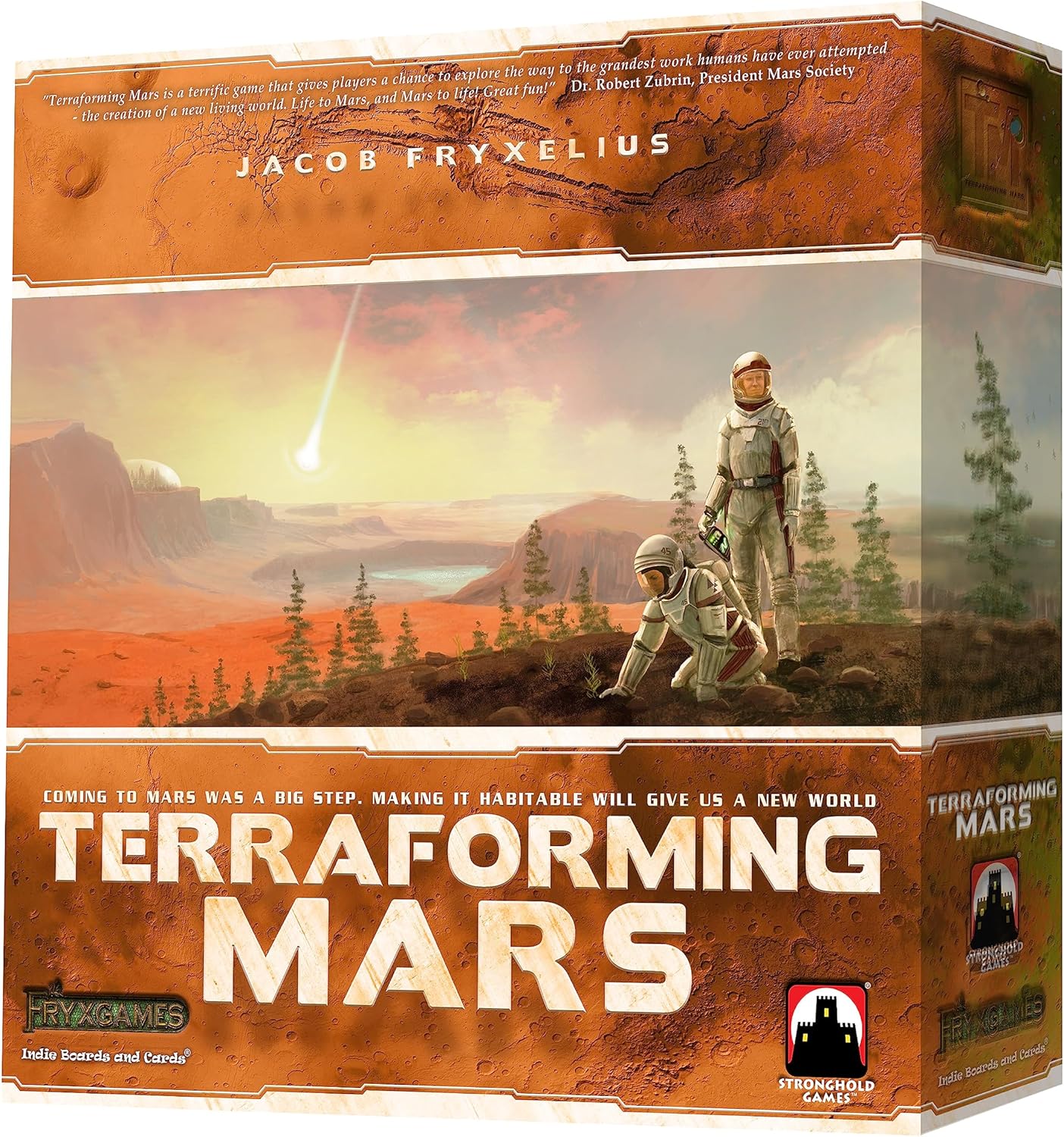Splendor is a compact, elegantly designed engine-building game that has earned its place as a modern classic. Set during the Renaissance, players take on the role of gem merchants acquiring mines, transportation, and artisans to build a prestige-generating economy. With simple rules and minimal setup, it delivers a layered, tactical experience that’s easy to teach and consistently engaging.
The game’s tension comes from its clean structure: on your turn, you collect gems, reserve cards, or purchase development cards to build permanent bonuses. These bonuses, in turn, reduce the cost of future purchases and can attract noble patrons for bonus points. The race to 15 points creates just enough urgency to force tough decisions—do you go wide with cheap bonuses or dive deep for high-value cards? Splendor’s brilliance lies in how these questions evolve across each 30-minute session.
Visual Design & Theme
Splendor uses a subdued Renaissance theme that offers just enough atmosphere to frame the mechanics. Card artwork features portraits, architecture, and trade goods that evoke a historical setting, though theme is not central to the gameplay. The visual design leans into clarity over immersion, which suits the game’s tight structure well.
While some players may find the presentation a bit dry, the clean layout makes information instantly accessible. Each card tier is color-coded and well-organized, and noble tiles clearly communicate their requirements and rewards. The aesthetics may not spark storytelling, but they support a streamlined and focused play experience.
Production Value
The standout component in Splendor is its gem tokens—thick, weighted poker chips that elevate the game’s tactile appeal. These chips are satisfying to stack, slide, and collect, and they give Splendor a premium feel despite its minimalist production.
The development cards and noble tiles are sturdy with a matte finish, and the compact box keeps things well-organized, though some players may opt for a better insert. For a game of this weight and price point, the overall production is impressive and adds to its long-term replay life.
Ease of Learning
Splendor is exceptionally easy to teach. The rules can be explained in five minutes, and new players can begin playing without needing to reference the rulebook. Each action is clearly defined—take gems, reserve, or buy—and the economy of how bonuses reduce costs becomes intuitive within a round or two.
Despite its accessibility, the game has genuine strategic depth. Advanced players will look several turns ahead, track opponents’ engines, and reserve key cards not just for their own benefit but to block others. This layering makes Splendor ideal as both a gateway game and a warm-up for more serious strategy nights.
Setup & Teardown Time
Setup is refreshingly fast. Lay out the gem tokens by color, shuffle and stack the three tiers of development cards, and deal out the nobles. The whole process takes about 3 minutes.
Teardown is equally fast, and the compact component count makes Splendor ideal for situations where time or space is limited. Its ease of setup contributes significantly to its replay value and versatility.
Gameplay Pace
Turns in Splendor are quick, with players usually taking under 30 seconds to complete their actions. Even with four players, the game flows smoothly thanks to limited choices per turn and a clearly visible shared market.
As players build more powerful engines, the tension grows—but the pacing never lags. Races to high-tier cards or contested nobles create exciting decisions in the final few turns. It’s a game that invites quiet focus rather than loud competition, and that keeps the table steadily engaged from start to finish.
Replayability
Splendor’s replayability is rooted in its elegant structure and adaptability to different play styles. While the card pool is finite, the random setup and noble combinations shift priorities each game. Strategic builds vary from aggressive card-sniping to long-term bonus stacking, and the limited interaction still encourages close observation of opponents’ boards.
That said, players looking for narrative progression or heavier strategy may find the base game eventually repetitive. The Cities of Splendor expansion addresses this by introducing modular goals and mechanics—but even without it, the core experience remains tight and rewarding over dozens of plays.
Conclusion
Splendor is a model of minimalist design done right. It teaches quickly, plays smoothly, and delivers consistent strategic payoff with minimal downtime. Though its theme is lightly applied, and its mechanics won’t satisfy those craving deep narrative immersion, it excels as a smart, polished engine-builder that fits into almost any collection. Whether used as an introduction to modern board gaming or as a filler between heavier titles, Splendor shines in its simplicity.









